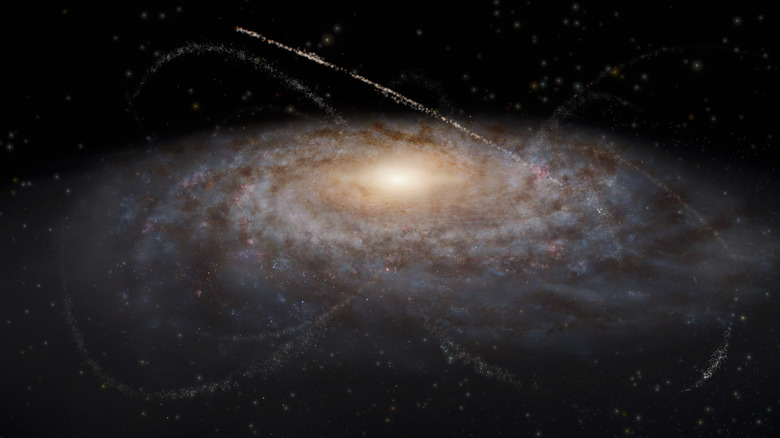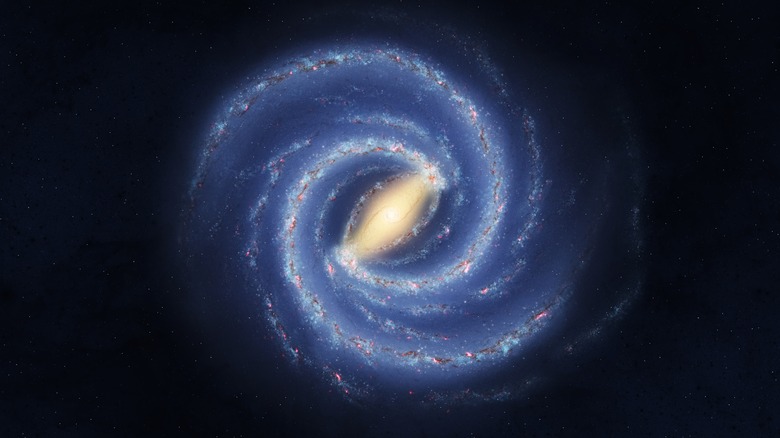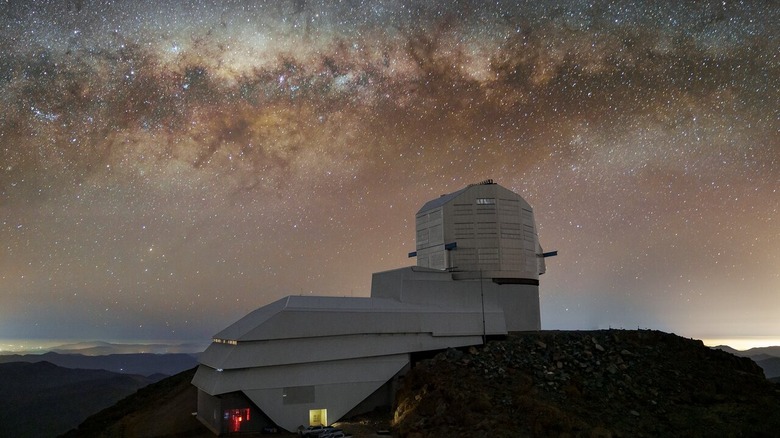This Telescope Will Search For The Ghostly Fingerprints Of Mysterious Dark Matter
Over the next few years, astronomers will have a new tool for examining the cosmos: the Vera C. Rubin Observatory. Situated at the top of a mountain in Chile, the observatory aims to discover the secrets of the most mysterious matter in the universe — dark matter. Astronomers know that dark matter makes up 27% of the universe, but it is extremely difficult to detect because it doesn't interact with light of any kind. To study it, scientists have to infer its presence from indirect clues.
Rubin will be performing a survey of the sky using the largest digital camera ever built for astronomy, collecting huge amounts of data every night by observing the entire southern sky across 10 years. One way scientists will look for dark matter is through a technique called gravitational lensing, in which the gravity of large clumps of dark matter is strong enough to bend light as it travels to us. By looking for signs of this bent light, scientists can work out how much dark matter is present.
But that method can only detect dark matter on a very large scale, where very large amounts of it are producing gravity strong enough to bend light. Rubin will also use a different technique for searching for dark matter on a smaller scale, by looking at dark matter fingerprints called stellar streams.
"I'm really excited about using stellar streams to learn about dark matter," said Nora Shipp, co-convener of the Dark Matter Working Group in the Rubin Observatory. "With Rubin Observatory we'll be able to use stellar streams to figure out how dark matter is distributed in our galaxy from the largest scales down to very small scales."
What are stellar streams?
Stellar streams are long, ribbon-like groups of stars that orbit around a galaxy such as our Milky Way. These groups of stars all move together in long, slender lines that form glittering arcs around a galaxy, sometimes containing total masses millions of times the mass of the sun.
The streams are easily disrupted by gravitational effects, so they can show the fingerprints of dark matter by pointing to where its gravity has disturbed the stream. Scientists know that dark matter exists surrounding galaxies like the Milky Way in a structure called a halo, which contains clumps of dark matter. These clumps create gaps in the stellar streams which will be detectable by Rubin.
"Stellar streams are like strings of pearls, whose stars trace the path of the system's orbit and have a shared history," said Jaclyn Jensen of the University of Victoria who will use Rubin data for her research. "Using properties of these stars, we can determine information about their origins and what kind of interactions the stream may have experienced. If we find a pearl necklace with a few scattered pearls nearby, we can deduce that something may have come along and broken the string."
It has been difficult for astronomers to study these stellar streams before because there are so many other stars in the Milky Way that it's tough to spot which particular stars are part of a stream. So researchers will look for clues like the motion of certain stars to see whether they are moving together as part of a stream and will use Rubin's ultraviolet capabilities to help identify the particular stars they are looking for.
Using large quantities of data
The big advantage that the Rubin Observatory will provide to scientists is the huge volume of data that it will collect. The images it collects will be extremely detailed, thanks to its 8.4-meter telescope and camera which will take 3200-megapixel images.
The detailed images will help the researchers to look for the disturbances in the stellar streams which indicate a description caused by dark matter. And that will enable them to study dark matter within the Milky Way, and on a larger scale by looking at the mass of dark matter bending light from distant galaxies.
"By observing stellar streams, we'll be able to take indirect measurements of the Milky Way's dark matter clumps down to masses lower than ever before, giving us really good constraints on the particle properties of dark matter," explained Shipp. "Right now it's a labor-intensive process to pick out potential streams by eye — Rubin's large volume of data presents an exciting opportunity to think of new, more automated ways to identify streams."
Rubin Observatory is currently scheduled to begin science operations in 2025, and just recently its huge mirror reached a milestone when it received its first reflective coating ahead of it being installed into the telescope.


